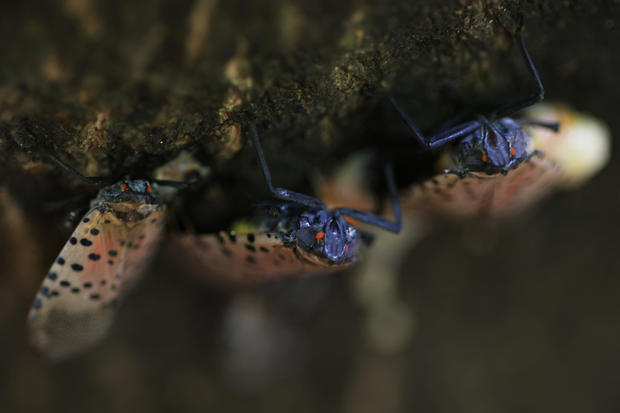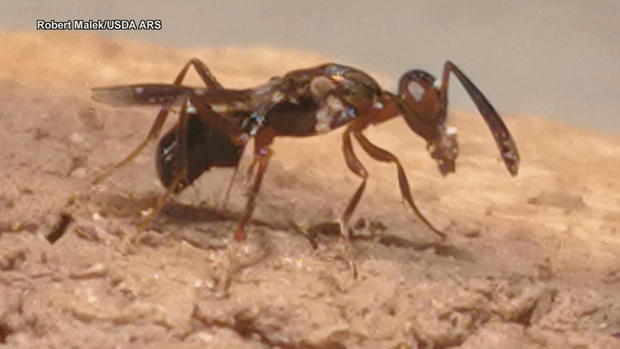What kills spotted lanternflies? Scientists find potential solution to invasive bug
NEWARK, Del. (CBS) -- Summer is almost here, which means it won't be long before swarms of spotted lanternflies come to the Philadelphia area. It's been almost 10 years since the invasive species first appeared in the region, but are scientists making any progress in getting them under control?
Part of the problem is that because lanternflies are an invasive species from Asia, they don't have any natural predators in America, which has allowed their population to explode.
Researchers in Delaware say they traveled to China and came back with a couple of natural predators with major potential.
"The species name is Dryinus sinicus," Kim Hoelmer, with Beneficial Insects Introduction Research Unit, said, "and it has no common name."
Inside a USDA laboratory on the University of Delaware's campus, researchers have been studying spotted lanternflies ever since they arrived in Berks County, Pennsylvania, nearly 10 years ago.
"These females search through the environment," Hoelmer said, "and they attack the young nymphal stages."
Their goal is to find a natural predator capable of controlling the invasive species before the spotted lanternflies do more damage to American agriculture, especially grape growers.
"When [spotted lanternfly adults] become very abundant and buzz around in the fall, they become bothersome to people," Hoelmer said. "But the real impact of this invasive species, the economic impact, is because of its ability to attack grapes."
The recently retired Hoelmer is still part of the project.
Through extensive research, Hoelmer and his colleagues have honed in on two tiny parasitic wasps that specifically seek out and attack adolescent lanternflies in their native country of China.
"The first of these of these wasps is a small parasitic wasp that attacks lanternfly eggs," Hoelmer said, "and the second is another parasitic wasp a little bit larger that attacks the younger nymphal stages after the eggs hatched."
Smaller than the size of your fingernail.
Hoelmer says you don't have to worry about these wasps stinging or hurting humans, but because they're not native to North America, it takes years of testing to prove they prefer lanternflies to other insects.
"We don't want these wasps to attack insects that are not causing problems in North America or are beneficial," he said.
Hoelmer says they're likely still a couple of years away from getting government permission to release these wasps in the wild, but if their tests continue to go well, he says they're our best bet to get this invasive insect under control.
"We're hopeful that we can eventually demonstrate that we'll be able to release at least one of the natural enemies, if not both, but we're not there yet," Hoelmer said. "We just have to keep our fingers crossed and hope that that's where the results will take us."
Spotted lanternflies started in Pennsylvania and have since spread to 17 states.
Scientists say they wouldn't be surprised if they're spotted from coast to coast soon, but there's hope to get the invasive species under control one day.






